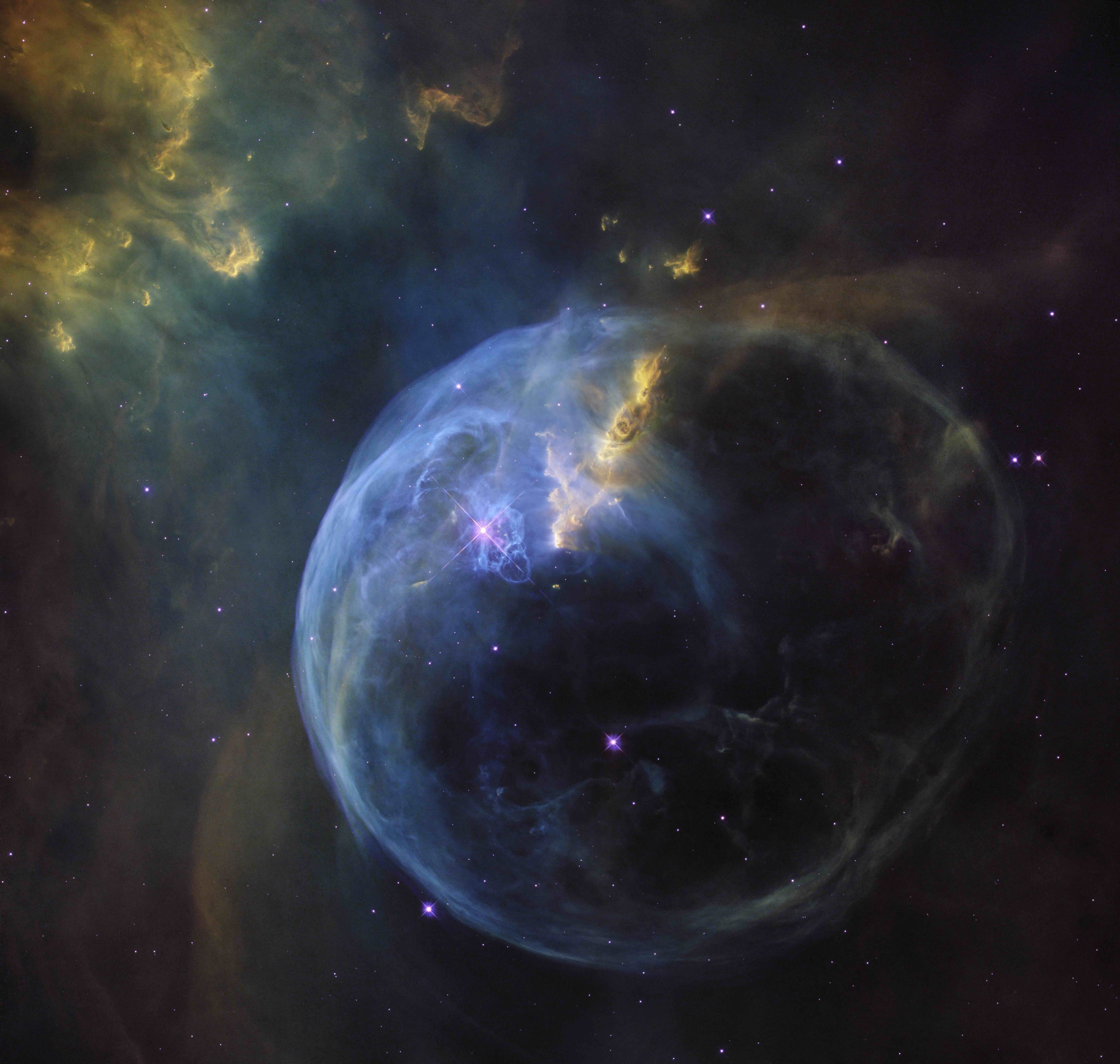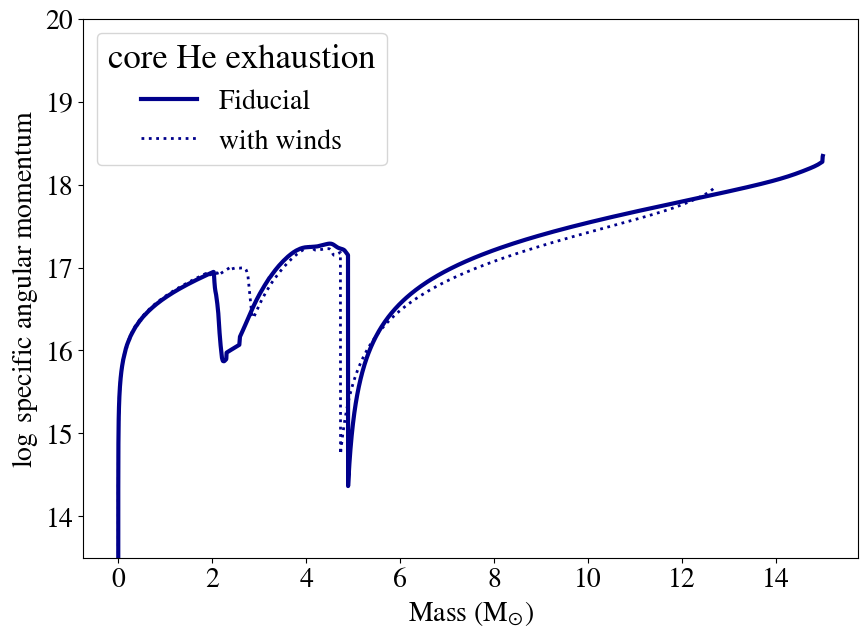Stellar winds are an important aspect of massive star evolution.
As mass is lost from the outer layers of the star, they carry away angular momentum (see previous section).
We are going to add some winds to our $15\mathrm{M_{\odot}}$ star, which will make it much more realistic.
This part of the hackathon is based heavily on
the MESA down under day 2 minilab3.
A lot of credit goes to Aldana Grichener, and Jared Goldberg for the content.
The wind mass loss prescriptions that we use in MESA are based on observations.
Unfortunately, massive stars are rare, and even when you manage to observe them, it is very difficult to measure their mass loss rates.
Moreover the theoretical processes by which stars launch winds are also poorly-understood.
Because of this, the wind mass loss rates are still very uncertain, and you might find yourself in a situation where you want to test the effect of your own custom wind prescription.
Because of the many uncertainties, we will take a parameterized approach: we will consider constant mass loss rates and their impact on
the stellar structure and evolution of the star.
To do this, we need to use the 'other_wind hook' in Note! Runs with higher values of w tend to take longer to run Stellar winds
Tasks W.1
log_directory = 'LOGS_winds'
D_ST_factor = 1.0 and am_nu_ST_factor = 1.0.
inlist_rotating_star:
where the top 4 lines set the wind schemes for cool stars (that is winds on the red giant branch and asymptotic giant branch), and
the bottom 3 lines are for hot stars (i.e., main sequence, Hertzsprung-gap and Wolf-Rayet stars).
! wind
cool_wind_full_on_T = 1d4 ! cool wind scheme takes effect below this temperature
cool_wind_RGB_scheme = 'Dutch'
cool_wind_AGB_scheme = 'Dutch'
Dutch_scaling_factor = 0.8d0 ! scaling for the Dutch wind scheme (default = 0, so no mass loss)
hot_wind_full_on_T = 1.01d4 ! hot wind scheme takes effect above this temperature
hot_wind_scheme = 'Vink'
Vink_scaling_factor = 3d0
How will this affect the surface rotation?
Check your expectation by printing out the surface rotation rate at the end of the simulation
(e.g., histdata.surf_avg_v_rot[-1]).
Focus on the core-envelope boundary, is the core-envelope boundary at higher or lower mass?
Now focus on the height of the specific angular momentum at that core-envelope boundary, is it higher or lower when winds are included?
Using the Other_wind hook
 The 'bubble nebula' NGC_7635 caused by the winds of a $44 M_{\odot}$ star.
The 'bubble nebula' NGC_7635 caused by the winds of a $44 M_{\odot}$ star.
Credit: NASA, Hubble Space Telescope
run_star_extras.f90 .
The 'other' hooks in MESA are extremely useful as they allow us to implement different physical concepts through run_star_extras.f90
without changing the source-code of MESA.
Tasks W.2
$MESA_DIR/star/other/other_wind.f90.
From there, copy the subroutine "null_other_wind" to your run_star_extras.f90 file located at
~/rotating_star_proj/src/run_star_extras.f90
This routine will set your stellar wind mass loss to a constant rate specified by w (in units of Msun/year).
run_star_extras.f90, change w=0 to your chosen rate.
s% other_wind => other_wind_routine
Do this by adding use_other_wind = .true. as a line to the &controls section of inlist_rotating_star
If you want to save this in a separate folder again (recommended), change: log_directory = 'LOGS_other_winds'
./clean ; ./mk from the terminal in your rotating star directory, before you ./rn!

